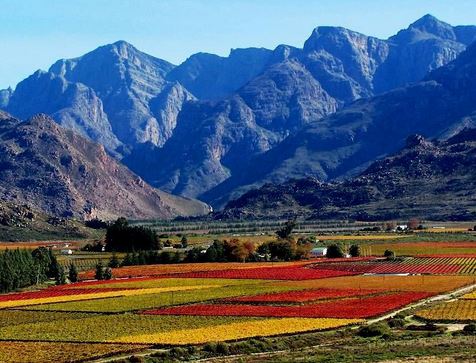Malaria
Malaria, what is it?
Malaria is an infectious disease caused by single-celled parasites of the genus Plasmodium. The (plasmodium) parasite is transmitted to humans by malaria mosquitoes. The first symptoms, such as fever, chills, muscle aches and headaches, can occur about 8-10 days after the sting. Often these symptoms are preceded by a flu feeling.
Malaria is a dangerous disease and it is therefore wise to protect you properly. The malaria mosquitoes are particularly active from sunset, when it gets dusk, until sunrise. During this period it is advisable to wear clothing that covers your skin and to apply mosquito-repellent lotion. If possible, use a mosquito net / mosquito net at night (make the mosquito net close to your bed before the sun sets). If you use anti-malarial tablets, you can still be stung by a malaria mosquito. However, the malaria tablets ensure that the symptoms are not as intense as when you are not taking malaria tablets.
On the map below you can see in which areas malaria mosquitoes are most active. Occasionally, however, a malaria case occurs in an area that is not seen as a risk area (for example, when the malaria mosquito has ‘traveled’ from a malaria area).
South Africa Specialist takes no responsibility for the information below. For the most up-to-date information, please refer to the Haven Hospital in Rotterdam. They have been the market leader in Tropical Medicine and Traveler Diseases since it was founded in 1927 and have a very thorough knowledge of tropical diseases and current developments.
Malaria symptoms
It is very important to know that the disease process can spread very quickly and different complications then occur, sometimes within 24 hours !!. Fever or “flu” that persists for more than two days should be considered malaria until proven otherwise. If you suspect a malaria attack, you must have a doctor or hospital check your blood for malaria parasites. The correct treatment can then be given. Malaria can be cured well in principle!
Malaria Areas South Africa
There is malaria in South Africa, only in the eastern part of South Africa, including the Kruger Park, and especially from September to May. See the map for the malaria areas in South Africa. It is recommended to use lariam, malarone or doxycycline in this area during the specified period.
The map gives a global overview of malaria in South Africa. You should always be personally advised on measures against malaria, because the choice of anti-malarial agent depends on your personal circumstances, such as your health, duration of stay in South Africa and other factors.
Malaria Areas of Botswana
Malaria regions Namibia
Malaria appearance
Malaria can be prevented by taking the following measures:
1. By protecting you against mosquito bites.
2. Use impregnated mosquito net and Deet (minimum 30%).
3. Wear covering clothing after sunset (long pants, long sleeves, shoes and socks). Especially cover your feet and ankles because mosquitoes often fly just above the ground.
5. By consulting a doctor as soon as possible if you think you have symptoms of malaria.
Malaria tablets
For questions about Malaria in combination with pregnancy you can go to: travelclinic.nl
The different malaria tablets
Paludrine: (Proguanil hydrochloride)
-
Paludrine is a substance that is still used in areas where mosquitoes are not yet resistant to it.
- The most common side effects, if they occur, are mild in nature: nausea, diarrhea, abdominal pain, stuffiness, vomiting, headache and the like.
- Paludrine can be used as far as known during pregnancy and lactation.
Nivaquine: (chloroquine)
- Nivaquine suppresses the Malaria tertiana and therefore does not prevent it, which means that it could still emerge after returning.
- The most common side effects are mild in nature, although things like hair loss, dizziness, skin rashes and the like are also regularly attributed to the use of Nivaquine
- You may not use it if you have psoriasis
- In principle, you must take the chloroquine weekly dose on the day of departure to the malaria area and the weekly dose again the following day. You then switch to the weekly dose once a week. Continue until 4 weeks after leaving the malaria area. Take tablets during or after meals.
- Can be used by pregnant women and children, although pregnant women are nevertheless advised against traveling to malaria areas. The effects of treatment once you have malaria can be risky for both mother and unborn child.
Lariam: (Mefloquine)
- Travelers attribute strange side effects to Lariam such as strange dreams, panic attacks and depression. However, most travelers are not bothered or at least bothered more than they are by other antimalarial drugs. Experts do not agree on the likelihood of these side effects, the results of studies vary from 1 in 10,000 to 1 in 140. Many travelers get used to certain side effects even after a while. It is in any case important that you make your own decision in this regard (and / or in consultation with your own doctor and travel doctor).
- The most common side effects are mild: nausea, diarrhea, dizziness, sleeping problems and imbalance (usually it resolves after one or more weeks, 70% of symptoms come from the first three pills).
- People with epilepsy, (major) depression or other psychiatric disorders, people who are taking beta-blockers or who have heart problems, should in principle not use this medicine to prevent malaria (check your doctor), children under 15 pounds are also advised against.
- Lariam is the cheapest anti-malaria agent on the market in the Netherlands.
- You take it once a week. It is recommended to start at home 3 weeks in advance so that you can see if you are hypersensitive or not. Then continue until 4 weeks after leaving the malaria area. Resistance to lariam occurs every now and then (may change).
- If you go diving it is not recommended to use Lariam. This is because it can cause dizziness and problems with your balance.
-
For small children, the pharmacy can make Lariam capsules.
- Pregnancy & breastfeeding: Lariam must not be used during the first 3 months of pregnancy. It is not recommended to become pregnant for up to 3 months after taking Lariam, and breastfeeding is also not recommended.
Malarone: (combination of Atavaquon-Proguanil)
-
This medicine has been on the market in Denmark, for example, since the late 1990s, but relatively new in the Netherlands.
-
It is a reasonable price, especially because you have to take it daily: around 40 euros for 12 tablets. After a week or two, Lariam becomes cheaper and the longer you leave, the greater the difference, of course.
-
Studies have shown that Malarone is about 98% effective as malaria prevention, which is equivalent to lariam or doxycycline.
- Malarone has fewer side effects than the other antimalarials, but headaches or stomach problems can occur.
-
You should take Malarone at the same time each day with some food or dairy drink. Start 1 day before departure and continue until 7 days after leaving the malaria area.
- Pregnancy & breastfeeding: Malarone cannot be used during pregnancy, breastfeeding is also not recommended.
- Not recommended for those who are sensitive to atovaquone or proguanil.
22 pills of Malanil (same as Malarone) are sold in South Africa for around 45 Rand per pill when you buy 22. Note that you need a prescription from the doctor (in ZA) to be able to buy the pills at the pharmacy.
Doxycycline:
- This antibiotic is not yet registered as an antimalarial in the Netherlands, but is widely prescribed in England, for example, and can also be obtained locally.
-
Doxycycline is mainly used in areas where there is a lot of resistance to other malaria tablets (South-East Asia)
-
Doxycycline is very cheap (cheaper than lariam, let alone malarone).
- The anti-conception pill may work less well in combination with Doxycycline! In addition, some people suffer from hypersensitivity to the sun or from GI upset.
-
Start taking on the day of departure and swallow up to and including 4 weeks after leaving the malaria area. Test a week in advance to see if it doesn’t bother you.
- Not suitable for children under 8 years.
- Doxycycline cannot be used during pregnancy and lactation.
- For the time being it is not recommended to take more than three months without doctor’s supervision.
Other resources
-
Fansidar: is no longer prescribed to prevent malaria, among other things because of the severe side effects. Is still used as a treatment for malaria
- Maloprim: also a reserve agent because of the side effects
- Halofantrine: not used much anymore due to side effects
- Quinine: is used as a treatment agent
- Artemesia annua (sweet wormwood) natural product just for sale in many tropical countries, seems to have very few side effects, but not yet sufficiently tested to pass through the Western authorization institutions (including the shelf life of the pills and the like)
- Qinghaosu also a natural product
- Arteflene
- Artemether
- Artesunate
Malaria tests
There are various Malaria tests on the market (including Now Malaria and Malaquick). However, relatively little is known about how this works.
Add to my travel plans


